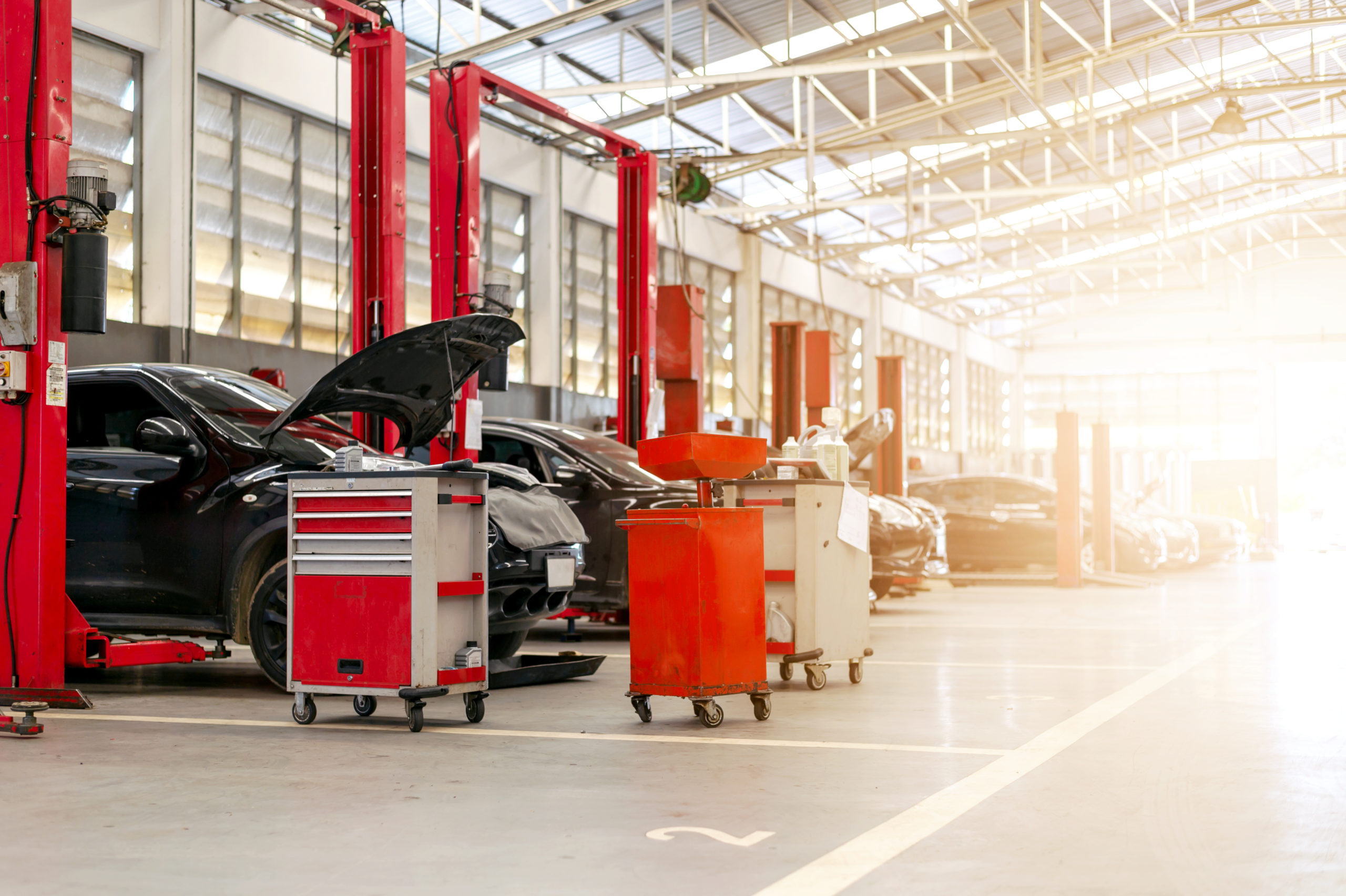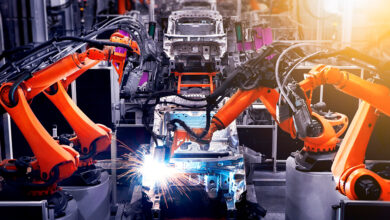Workplace Safety Tips for Auto Shops

The following safety tips were provided by Plant-Tours.com
Various safety hazards can make working in an auto shop dangerous. While working with heavy machinery or hazardous materials, you must be safe and take the necessary precautions.
Common Occupational Hazards and Their Effects
Auto shops are prone to safety hazards. Here are examples of the most common ones:
Strains, Sprains, and Tears
Auto shops are dangerous workplaces because of the hazards that lead to strains, sprains, and tears. So what are they?
Strains occur through lifting heavy equipment or making repetitive motions like tightening a bolt. Symptoms include pain, stiffness, or limited movement. On the other hand, sprains can happen due to slips, falls, or any hazards that make the body twist unnaturally. Last but not least, tears due to forceful movement or overuse of muscles.
The effects of sprain, strain, and tears range from mild to severe. It can lead to decreased productivity, increased healthcare costs, or even paralysis if left untreated.
Eye Injuries
In an auto shop, workers are exposed to various hazards that cause eye injuries, including:
- Flying debris from tools, such as saws or grinders, can penetrate the eye and cause eye injury.
- Chemicals can cause irritation or chemical burn when in contact with the eye.
- UV rays from welding or brazing can cause photokeratitis or ‘welder’s flash.’
Without proper protection, these can cause serious eye injuries. The effect of eye injuries can range from mild irritation to permanent loss of vision.
Chemical Burns
Chemical burns are a common safety hazard as auto shop workers are exposed to various hazardous substances that can cause serious injuries. Chemical burns can occur by breathing chemical fumes or direct contact with chemicals.
According to Occupational Safety and Health Administration (OSHA) standards, chemicals must be properly labeled. Labels should have signal, hazard, and precautionary statements.
Chemical burns range from mild cuts or bruises to lifelong pain and permanent disability.
Slips, Trips, and Falls
Oil changes, transmission flushes, or any other activities that include slippery lubricant can make the workers slip, trip, or fall. When grease and paint coat the floor, it can lead to severe injuries. A cluttered workplace can also increase the risk of this type of accident.
Slips and falls are the most common cause of severe injuries among workers. They can lead to broken bones, concussions, fractures, bruises, and other damages.
Loss of Limb or Digit
Workers that use power tools such as grinders risk losing limbs or digits if they don’t wear the proper protective equipment, follow the appropriate equipment operating instructions, or put guards in place. Loss of limbs can lead to permanent disability, increased health care costs, and reduced productivity in work.
Auto Shop Safety Tips
Here are some safety measures to take when working or running an auto shop:
Personal Protective Equipment
Wearing personal protective equipment involves putting on a gloves, safety glasses, safety boots, hearing protection, gloves, coveralls, and overalls that protect different parts of your body from injuries. Mechanics are required to be protected at all times while working.
The equipment is designed to protect a person against physical, chemical, and biological hazards, ensuring they are in proper condition. Failure to wear correctly fitted equipment can lead to serious bodily injuries or death.
Proper Organization and Layout Plan
Workers should follow proper safety precautions and rules to protect themselves from safety hazards. The following are general tips to keep the workplace organized and prevent safety hazards:
- Keep work areas clean and organized.
- Securely stores tools and auto parts in cabinets to prevent the workplace from getting cluttered.
- Have easily accessible and proper fire extinguishers.
- Test fire alarms regularly.
- Use proper lifting techniques.
In addition to being organized, the auto shop should have a proper emergency exit plan to contain casualties during a fire accident. Floors and workplaces should be clean so that they can be quickly evacuated during a fire. Following safety guidelines can help prevent costly injuries and the daunting lawsuit processes.
Proper Floor Maintenance
Automotive shops should maintain a clean environment to prevent hazards from happening. Develop daily cleaning routines to prevent debris from accumulating in workplaces. Workers can keep the place clean from contaminants using microfiber mops and dual chamber mopping buckets. Also, using scraper mats can reduce the risks of pollutants spreading to the workplace.
Epoxy flooring can make general cleaning more manageable as it is easy to clean and add to the professional look of the automotive shop. You can also make general floor cleaning easier by cleaning spills immediately after you notice them.
Chemical Caution
Chemicals, if not handled carefully, can create serious hazards. The employer must ensure that all employees correctly handle chemicals. They should provide Material Safety Data Sheets (MSDS) for each chemical so that employees understand its associated hazards.
Some general safety guidelines for handling chemicals include:
- Store them in properly labeled containers.
- Dispose of them properly to avoid environmental contamination.
- Wear personal protective equipment while handling them.
- Clean spills immediately after something pours.
- Provide proper ventilation systems.
- Keep the workplace uncluttered.
- Never smoke in a repair bay or garage.
These general safety precautions prevent chemical burns.
Mitigating High Noise
Shops are typically very noisy places to work and it’s easy to miss the warning signs of danger when you can’t hear your surroundings. Not only that, but extended exposure to loud noise is a danger to your hearing as well. OSHA requires that any workplace averaging 85 decibels for an eight-hour span must put a plan in place to address noise, which could include providing personal hearing protection with the appropriate noise reduction rating.
Another strategy is using visual aids to provide warnings and clear instructions. There should be signs telling the customers that the shop is dangerous and to wait in the waiting room.
Enhancing Occupational Safety in an Auto Shop
Overall, working in an auto shop is dangerous due to potential hazards. Employers should ensure employees are adequately trained and equipped with protective equipment. It is also essential to have safety procedures to prevent major accidents.



